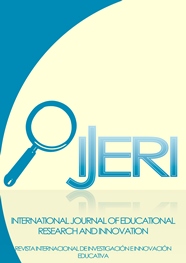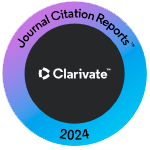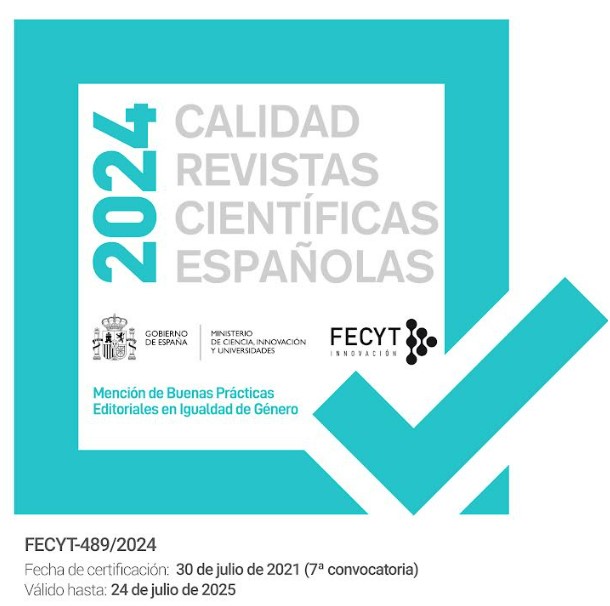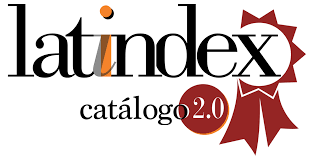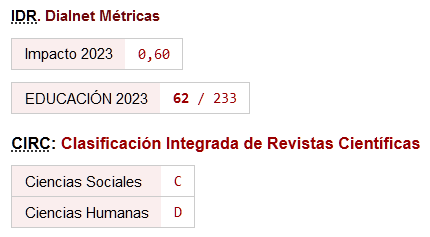Cómo los estudiantes chinos aprenden matemáticas durante la pandemia de coronavirus
DOI:
https://doi.org/10.46661/ijeri.4950Palabras clave:
COVID-19, software de matemáticas dinámicas Hawgent, enseñanza y aprendizaje, Vídeos e-learningResumen
La pandemia de Covid-19 se ha convertido en un problema mundial hoy día. La pandemia ha afectado a muchos sectores esenciales, incluido el sector educativo. Los estudiantes no pueden ir a la escuela para estudiar y se impone un distanciamiento social al quedarse en casa. Lo que hizo el gobierno para que los estudiantes continuaran estudiando en casa fue desarrollar medios de aprendizaje a distancia. En esta investigación, conoceremos más sobre cómo los estudiantes en China aprenden matemáticas en casa y qué actitud presentan ante el aprendizaje a distancia a través de Vídeo e-learning. Este estudio empleará un método de investigación cualitativa y cuantitativa. Los investigadores entregaron unos cuestionarios a 408 estudiantes en la provincia de Guangxi, China. También realizaron entrevistas a los estudiantes y a sus padres para conocer las ventajas y desventajas de usar vídeos para el aprendizaje durante esta pandemia de la Covid-19. El resultado de la investigación muestra que hay una buena actitud de aprendizaje de los estudiantes hacia esta metodología. Los estudiantes destacan que el aprendizaje a través de Vídeos e-learning es muy interesante y además efectivo, ya que pudieron entender perfectamente el concepto que se quería transmitir.
Descargas
Citas
Al-Mashaqbeh, I. F. (2016). IPad in elementary school math learning setting. International Journal of Emerging Technologies in Learning, 11(2), 48–52. https://doi.org/10.3991/ijet.v11i02.5053
Arum, D. P., Kusmayadi, T. A., & Pramudya, I. (2018). Students’ difficulties in probabilistic problem-solving. Journal of Physics: Conference Series, 983(1). https://doi.org/10.1088/1742-6596/983/1/012098
Ashokka, B., Ong, S. Y., Tay, K. H., Hooi, N., Loh, W., Gee, F., & Samarasekera, D. D. (2020). Coordinated responses of academic medical centres to pandemics : Sustaining medical education during COVID-19 Coordinated responses of academic medical centres to pandemics : Sustaining medical education during COVID-19. Medical Teacher, 0(0), 1–10. https://doi.org/10.1080/0142159X.2020.1757634
Badraeni, N., Pamungkas, R. A., Hidayat, W., Rohaeti, E. E., Wijaya, T. T., Sudirman, J. J., & Barat, J. (2020). Analisis kesulitan siswa berdasarkan kemampuan pemahaman matematik dalam mengerjakan soal pada materi bangun ruang sisi datar. 04(01), 247–253.
Bernard, M., & Chotimah, S. (2018). Improve student mathematical reasoning ability with open-ended approach using VBA for powerpoint. AIP Conference Proceedings, 2014(September). https://doi.org/10.1063/1.5054417
Brezovszky, B., McMullen, J., Veermans, K., Hannula-Sormunen, M. M., Rodríguez-Aflecht, G., Pongsakdi, N., … Lehtinen, E. (2019). Effects of a mathematics game-based learning environment on primary school students’ adaptive number knowledge. Computers and Education, 128(August 2018), 63–74. https://doi.org/10.1016/j.compedu.2018.09.011
Cao, W., Fang, Z., Hou, G., Han, M., Xu, X., Dong, J., & Zheng, J. (2020). The psychological impact of the COVID-19 epidemic on college students in China. Psychiatry Research, 287(March), 112934. https://doi.org/10.1016/j.psychres.2020.112934
Chatmaneerungcharoen, S. (2019). Improving Thai Science Teachers’ TPACK through an Innovative Continuing Professional Development Program. Journal of Physics: Conference Series, 1340(1). https://doi.org/10.1088/1742-6596/1340/1/012017
Chotimah, S., Bernard, M., & Wulandari, S. M. (2018). Contextual approach using VBA learning media to improve students’ mathematical displacement and disposition ability. Journal of Physics: Conference Series, 948(1). https://doi.org/10.1088/1742-6596/948/1/012025
Cunhua, L., Ying, Z., Qunzhuang, O., & Wijaya, T. T. (2019). MATHEMATICS COURSE DESIGN BASED ON SIX QUESTIONS COGNITIVE THEORY USING HAWGENT DYNAMIC MATHEMATIC. Journal On Education, 02(01), 36–44.
Daniel, S. J. (2020). Education and the COVID-19 pandemic. Prospects, (0123456789). https://doi.org/10.1007/s11125-020-09464-3
Fachrudin, A. D., Ekawati, R., Kohar, A. W., Widadah, S., Kusumawati, I. B., & Setianingsih, R. (2019). Ancient China history-based task to support students’ geometrical reasoning and mathematical literacy in learning Pythagoras. Journal of Physics: Conference Series, 1417(1). https://doi.org/10.1088/1742-6596/1417/1/012042
Fitri, N. L., & Prahmana, R. C. I. (2019). Misconception in fraction for seventh-grade students. Journal of Physics: Conference Series, 1188(1). https://doi.org/10.1088/1742-6596/1188/1/012031
Hernawati, K., & Jailani. (2019). Mathematics mobile learning with TPACK framework. Journal of Physics: Conference Series, 1321(2). https://doi.org/10.1088/1742-6596/1321/2/022126
Hutajulu, M., Wijaya, T. T., & Hidayat, W. (2019). the Effect of Mathematical Disposition and Learning Motivation on Problem Solving: an Analysis. Infinity Journal, 8(2), 229.
https://doi.org/10.22460/infinity.v8i2.p229-238
Kay, R., & Kletskin, I. (2012). Evaluating the use of problem-based video podcasts to teach mathematics in higher education. Computers and Education, 59(2), 619–627. https://doi.org/10.1016/j.compedu.2012.03.007
Kerres, M. (2020). Against All Odds : Education in Germany Coping with Covid-19.
Khatimah, H., & Sugiman, S. (2019). The effect of problem solving approach to mathematics problem solving ability in fifth grade. Journal of Physics: Conference Series, 1157(4). https://doi.org/10.1088/1742-6596/1157/4/042104
Khotimah, K., Yuwono, I., Rahardjo, S., Universitas, P. M., & Malang, N. (2016). Penerapan Pembelajaran Inkuiri untuk Meningkatkan Hasil Belajar Trigonometri pada Siswa Kelas X. Jurnal Pendidikan, 1(11), 2158–2162.
Miguel-Revilla, D., Martínez-Ferreira, J. M., & Sánchez-Agustí, M. (2020). Assessing the digital competence of educators in social studies: An analysis in initial teacher training using the TPACK-21 model. Australasian Journal of Educational Technology, 36(2), 1–12. https://doi.org/10.14742/ajet.5281
Murphy, M. P. A. (2020). COVID-19 and emergency eLearning: Consequences of the securitization of higher education for post-pandemic pedagogy. Contemporary Security Policy, 0(0), 1–14. https://doi.org/10.1080/13523260.2020.1761749
Mushipe, M., & Ogbonnaya, U. I. (2019). Geogebra and Grade 9 learners’ achievement in linear functions. International Journal of Emerging Technologies in Learning, 14(8), 206–219. https://doi.org/10.3991/ijet.v14i08.9581
Nizarwati, N., Hartono, Y., & Aisyah, N. (2013). Pengembangan Perangkat Pembelajaran Berorientasi Konstruktivisme Untuk Mengajarkan Konsep Perbandingan Trigonometri Siswa Kelas X Sma. Jurnal Pendidikan Matematika, 3(2). https://doi.org/10.22342/jpm.3.2.328
Oner, D. (2020). A virtual internship for developing technological pedagogical content knowledge. Australasian Journal of Educational Technology, 36(2), 27–42. https://doi.org/10.14742/ajet.5192
Peters, M. A., Wang, H., Ogunniran, M. O., Huang, Y., Green, B., & Chunga, J. O. (2020). China’ s Internationalized Higher Education During Covid-19 : Collective Student Autoethnography. Postdigital Science and Education. https://doi.org/10.1007/s42438-020- 00128-1
Redmond, P., & Lock, J. (2019). Secondary pre-service teachers’ perceptions of technological pedagogical content knowledge (TPACK): What do they really think? Australasian Journal of Educational Technology, 35(3), 45–54. https://doi.org/10.14742/ajet.4214
Rohaeti, E. E., Bernard, M., & Primandhika, R. B. (2019). Developing interactive learning media for school level mathematics through open-ended approach aided by visual basic application for excel. Journal on Mathematics Education, 10(1), 59–68. https://doi.org/10.22342/jme.10.1.5391.59-68
Sofyadin, R. T. (2019). Implementation The Problem Based Learning Models To Improve Learning Outcomes Of XI Iis 1 Class 2 State High School Students Baubau Southeast Sulawesi. LA GEOGRAFIA, 17(3).
Suan, L., Ying, Z., & Wijaya, T. T. (2020). Using hawgent dynamic mathematics software in teaching arithmetic operation. International Journal of Education and Learning, 2(1), 25–31. https://doi.org/10.31763/ijele.v2i1.97
Sukaesih, S., Ridlo, S., & Saptono, S. (2019). Development of biology teaching management textbooks based on competency and conservation to maximize Pedagogical and Content Knowledge (PCK) the prospective teachers. Journal of Physics: Conference Series, 1321(3). https://doi.org/10.1088/1742-6596/1321/3/032114
Tezer, M., & Karasel, N. (2010). Attitudes of primary school 2nd and 3rd grade students towards mathematics course. Procedia - Social and Behavioral Sciences, 2(2), 5808–5812. https://doi.org/10.1016/j.sbspro.2010.03.947
Tossavainen, T., & Faarinen, E.-C. (2019). Swedish Fifth and Sixth Graders’ Motivational Values and the Use of ICT in Mathematics Education. Eurasia Journal of Mathematics, Science and Technology Education, 15(12). https://doi.org/10.29333/ejmste/108533
Wijaya, T. T., Purnama, A., & Tanuwijaya, H. (2020). Pengembangan Media Pembelajaran Berdasarkan Konsep Tpack pada Materi Garis dan Sudut Menggunakan Hawgent Dynamic Mathematics Software. JPMI – Jurnal Pembelajaran Matematika Inovatif, 3(3), 205–214. https://doi.org/10.22460/jpmi.v1i3.205-214
Wijaya, T. T., Ying, Z., & Purnama, A. (2020a). The empirical research of hawgent dynamic mathematics technology integrated into teaching. Journal Cendekia: Jurnal Pendidikan Matematika, 04(01), 144–150.
Wijaya, T. T., Ying, Z., & Purnama, A. (2020b). Using Hawgent Dynamic Mathematics Software in Teaching Trigonometry. International Journal of Emerging Technologies in Learning, 15(10), 215–222. https://doi.org/10.3991/ijet.v15i10.13099
Wijaya, T. T., Ying, Z., & Suan, L. (2020). Gender and Self-regulated Learning During COVID-19 Pandemic in Indonesia. Jurnal Basicedu, 4(3), 725–732. https://doi.org/10.31004/basicedu.v4i3.422
Yuliani, T. W., Fuad, Y., & Ekawati, R. (2019). Student’s Multiple Representation in Solving Addition and Subtraction of Fraction Problem. Journal of Physics: Conference Series, 1417(1). https://doi.org/10.1088/1742-6596/1417/1/012050
Zhu, X., & Liu, J. (2020). Education in and After Covid-19: Immediate Responses and Long-Term Visions. Postdigital Science and Education. https://doi.org/10.1007/s42438-020-00126-3
Descargas
Publicado
Cómo citar
Número
Sección
Licencia
Derechos de autor 2020 Tommy Tanu Wijaya

Esta obra está bajo una licencia internacional Creative Commons Atribución-NoComercial-SinDerivadas 4.0.

